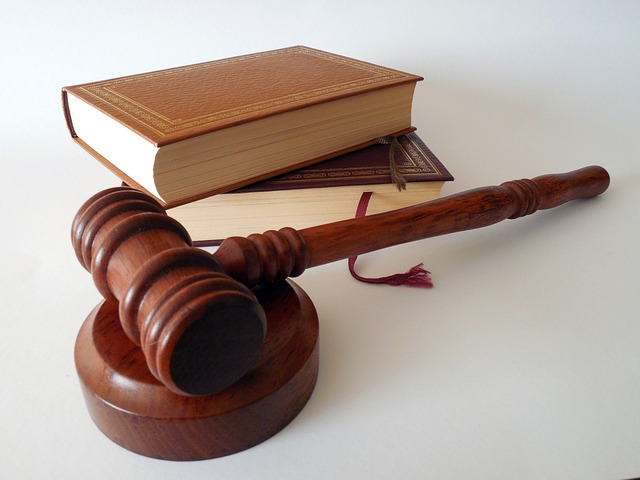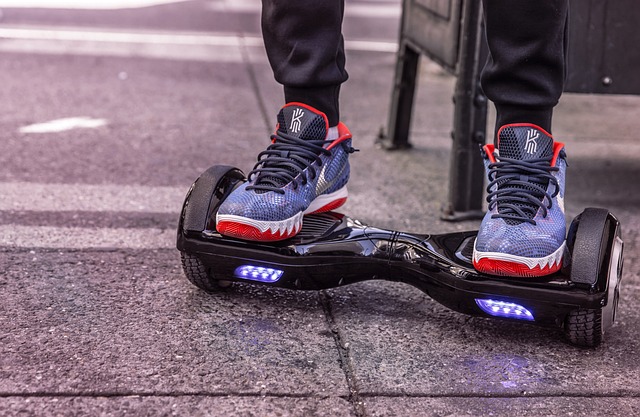Imagine zipping through the state with a flair of the futuristic promise – the thrill of personal electric mobility at your feet. But even as those wheels turn, are you aware of the legal gears turning behind these silent juggernauts? For the intrepid riders and cautious commuters among us, New Jersey’s hoverboard laws aren’t a mundane regulatory framework; they are the silent boundaries that define our experience of urban space. Whether you’re an early adopter of cutting-edge tech, a dissertation-weary student, or an eco-conscious city dweller, understanding these laws is the first step to mastering the hoverboard revolution.
In this detailed exploration, we’ll hover over the legal frameworks in New Jersey, breaking down the ordinances, rules, and insights that hover over the garden state.
Navigating the New Jersey Hoverboard Landscape
New Jersey, nestled between the bustling hubs of New York and Philadelphia, has witnessed the rise of the hoverboard culture. In response, the state unveiled its own set of laws, balancing the allure of innovation with public safety and legal compliance.
Understanding the Hoverboard Itself
Before we ride into the legal labyrinth, it’s essential to know the hoverboard we speak of. These self-balancing, 2-wheeled electric scooters, though bearing the ‘hover’ moniker, are firmly grounded but deliver an experience that’s anything but conventional. Generally battery-operated and capable of speeds up to 10 mph, hoverboards have captured the fascination of the public – and the attention of lawmakers.
When Hoverboards Enter the Mainstream
The year of 2015 marked the pivot from sci-fi novelty to mainstream mobility, with hoverboards becoming a popular mode of recreation and short-range transportation. Initially embraced by celebrities and teens, the adaptable technology has found its way into everyday life, serving as an efficient urban travel option.
Cracking the Legal Code
However, the path to acceptance has been paved with concerns over accidents, battery malfunctions, and the operational behavior of hoverboard riders. This led New Jersey to enact laws and guidelines, aiming to both integrate hoverboards into the state’s transportation fabric safely and effectively and to assuage safety concerns.
Off the Ground and Onto Paper: NJ Hoverboard Laws Up Close

Hoverboards may be streamlined, but their legal dues are far from nimble. New Jersey’s approach to hoverboard laws is a comprehensive one that considers the device, the rider, and the context of use.
The Written Word: New Jersey Legislation
The legal thrust behind hoverboards in New Jersey can be traced to various statutes and regulations, including the New Jersey Motor Vehicle Commission and local municipal codes. This tapestry of rules is designed to cover as many bases as possible, ensuring safe operation and riders’ accountability.
The Essential Components of NJ Hoverboard Laws
Some key elements of hoverboard laws in New Jersey to be aware of include age restrictions (typically 14-year-olds and above), operation on roadways, designated pathways, and parking regulations. It’s advisable for riders to not only be aware of these guidelines but also understand the gravity of non-compliance, which can range from fines to more severe consequences in case of accidents.
Breaking Down the Hoverboard Safety Checklist
Riding a hoverboard may seem like carefree gliding, but safety should always be paramount. Understanding and adhering to safety practices not only protect the rider but also contribute to a positive image of hoverboard culture.
Safety Gear Primer
Just as with any wheeled personal transport, proper safety gear is a non-negotiable component of hoverboard operation. Helmets, knee and elbow pads, as well as wrist guards, can significantly dampen injuries in case of falls or collisions.
Environmental Compatibility
Navigating urban environments is about more than dodging potholes and pedestrians. It’s crucial for hoverboard users to understand the common grounds they share with traditional vehicles and non-motorized traffic. This includes respecting pedestrian rights of way and, in some cases, yielding to vehicular traffic.
A Balancing Act: Understanding Liability and Insurance
The question of liability and insurance in the context of hoverboard use is a gray area that riders and policymakers are still calibrating.
Personal Liability
In the absence of tailored hoverboard insurance policies, personal liability comes to the fore. It’s imperative for riders to understand that they could be financially responsible for any damages or injuries they cause while operating a hoverboard.
Unraveling Rider Rights
The legal framework is evolving, and it’s crucial for hoverboard riders to stay informed of their rights, especially in the event of accidents or disputes. Seeking legal counsel can provide clarity and protection.
Beyond the Law: The Cultural Perceptions of Hoverboards
More than just a legal compliance issue, hoverboards represent a cultural shift in how we perceive and integrate personal electric mobility into our lives.
The Rise of Electric Micro-Mobility
The hoverboard is just one facet of a broader electric micro-mobility surge, including e-bikes and electric scooters. Understanding where hoverboards fit in this landscape can help shape an inclusive and informed conversation about future transportation.
Environmental and Health Considerations
For many, hoverboards are more than a novelty; they’re part of a lifestyle choice that favors green transportation and active living. By promoting environmental and health-friendly policies, states can harness the potential of hoverboards while mitigating any risks.
Commuting with a Hoverboard in New Jersey: A Practical Handbook
Commuting presents a unique set of challenges and opportunities for hoverboard riders. From the daily grind to the occasional escapade, the rules and best practices greatly differ from casual recreational use.
Urban Etiquette
Navigating crowded urban streets during rush hour requires a different approach than leisurely spins in the park. Understanding and respecting urban etiquette can make the difference between a smooth ride and a legal transgression.
Streamlining Your Commute
Commuting with a hoverboard can transform the mundane into an adventure, but it’s essential to plan ahead and know your route. Familiarizing yourself with local laws and safe pathways can turn your hoverboard into a reliable, eco-friendly commuter companion.
The Future of Hoverboard Laws in New Jersey
Legislation is not static, and as hoverboard technology continues to evolve, so will the laws that govern it. Anticipating these changes and their implications is vital for riders, policymakers, and the public at large.
Staying in the Legal Loop
Remaining vigilant about legislative updates and being proactive in discussions can help shape future hoverboard laws that balance safety, innovation, and practicality.
A Community in Motion
Hoverboard enthusiasts, manufacturers, and safety advocates form a community with a stake in the laws’ evolution. By fostering dialogue and cooperation, this community can ensure that regulations remain informed and equitable.
Are Hoverboards illegal in NJ?
In New Jersey, hoverboards are not outright illegal; however, their use is regulated under various state and municipal laws to ensure public safety and smooth cohabitation with other forms of transport. These regulations encompass age restrictions, designated areas for operation, and the mandatory use of safety gear, among other stipulations. Riders are encouraged to familiarize themselves with these laws to avoid penalties and ensure a safe, enjoyable hoverboarding experience.
Can Hoverboards be used in public places?
Hoverboards can indeed be used in public places in New Jersey, albeit within the confines of specific regulations that govern their operation. Public spaces such as parks, certain sidewalks, and designated hoverboarding areas accommodate these devices, provided users adhere to local ordinances. It is essential for riders to be mindful of the presence of pedestrians and other forms of transport to ensure everyone’s safety. Signage and local government websites are valuable resources for identifying hoverboard-friendly zones and understanding any restrictions that might apply, such as speed limits or hours of operation. By respecting these guidelines, hoverboard enthusiasts can enjoy the freedom of mobility while maintaining a harmonious relationship with the broader public space.
Can you use a hoverboard in a park?
Using a hoverboard in a park in New Jersey is generally permissible, but it’s crucial to comply with specific park regulations and any signage that might dictate different rules. Parks often have designated areas where hoverboard use is allowed, aiming to ensure the safety of all visitors. These areas are typically away from crowded pedestrian paths and sensitive natural habitats. It’s important for hoverboard riders to stay informed about the specific rules of each park, as these can vary significantly depending on the location and the managing authority. Observing these guidelines not only ensures a safer environment for everyone but also helps protect the natural beauty of the parks for future enjoyment.
Innovative Legal Approaches to Hoverboarding in New Jersey
The evolving nature of hoverboard technology presents a unique opportunity for New Jersey to lead in creating innovative legal frameworks that accommodate the growth of electric micro-mobility. One insight involves developing dynamic legislation that adjusts with technological advancements and user behavior trends. By integrating smart technologies, such as geofencing, into regulation enforcement, New Jersey can ensure hoverboard laws remain relevant and enforceable, enhancing public safety and user compliance. Another approach could involve public-private partnerships to designate and develop hoverboard-friendly infrastructure, like dedicated lanes, that cater to the needs of riders while minimizing disruption to pedestrian and vehicular traffic. These forward-thinking strategies can set a precedent for other states, fostering a balanced and sustainable integration of hoverboards into urban mobility systems.
Conclusion
Hoverboards are more than just a passing fad. As a tangible manifestation of our collective aspiration for a tech-forward and sustainable future, they are spinning their wheels into the tapestry of legal jurisprudence. New Jersey’s hoverboard laws are a testament to the state’s commitment to harnessing innovation with responsibility. By unpacking these legal frameworks, riders can finetune their experience, ensuring a smooth and compliant ride through the Garden State.
For the daring, the diligent, and the hoverboard-hopeful, New Jersey’s hoverboard laws stand not as restrictions, but as signposts in an exciting, uncharted frontier. With each turn of the wheel, we inch closer to a future where personal electric mobility is not just a dream but a democratic reality. As we glide into this new dawn, may our knowledge be as steadfast as our balance, and our zeal for innovation as unfettered as the hoverboards we adore.fillegal



